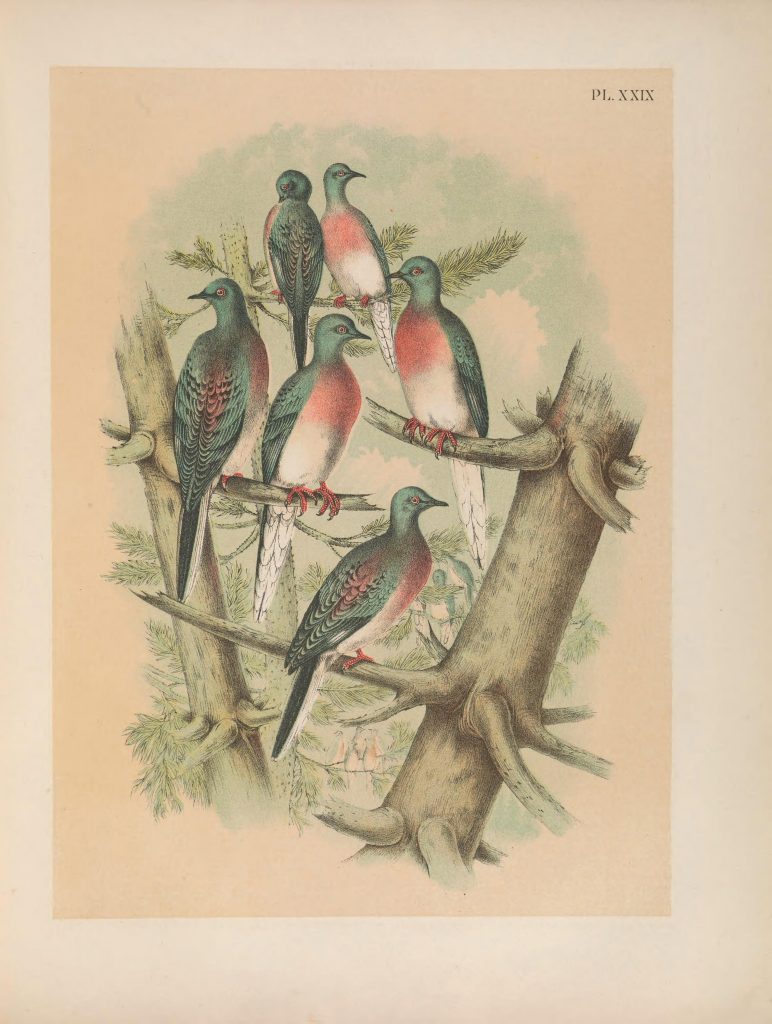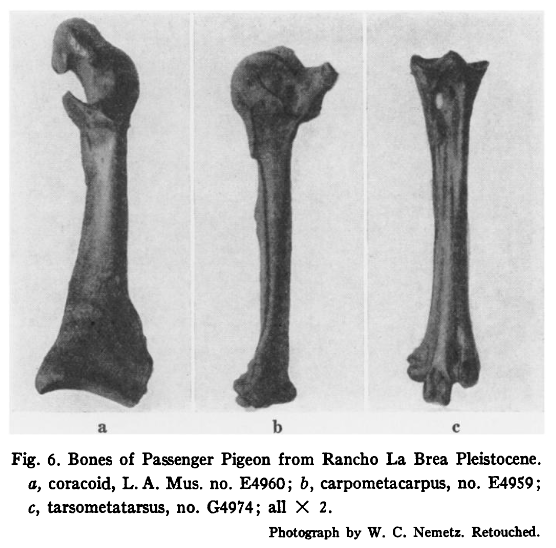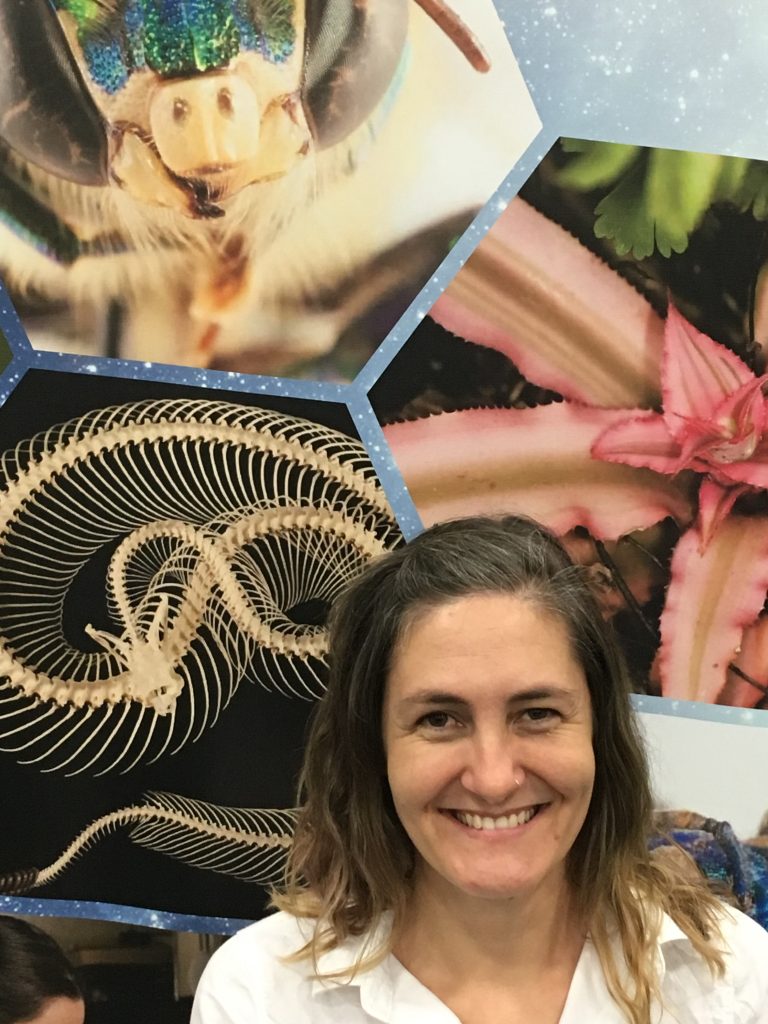From the La Brea Tar Pits to the Biodiversity Heritage Library: Exploring Passenger Pigeon Populations in the Western United States

Passenger pigeon (Ectopistes migratorius). The Birds of North America. 1903. Contributed in BHL from Smithsonian Libraries.
The passenger pigeon’s demise is one of the most infamous examples of human-caused extinction. Once the most abundant bird species in North America, it was hunted relentlessly, with large-scale commercial hunting facilitated by railroad distribution placing excessive pressure on the species. The population declined from billions to none in less than one hundred years.
The last passenger pigeon, Martha, died at the Cincinnati Zoological Garden at about 1pm on September 1, 1914.
While stories of passenger pigeon flocks blackening the skies underscore the species’ once staggering abundance, its distribution was concentrated in the eastern United States. But could there have been resident populations in the western U.S.?
Passenger pigeon bones uncovered from the La Brea Tar Pits in Los Angeles, California inspired Dr. Libby Ellwood to ask this very question and embark on a research project empowered by the Biodiversity Heritage Library’s collections.
Ellwood has been studying ecology, and its intersection with climate change, conservation, and citizen science, for ten years. For the past year, she has been engaged as a Research Fellow at the La Brea Tar Pits & Museum. She first discovered BHL several years ago during her postdoc at iDigBio, a national resource for digitizing natural history collections and associated information. Since then, the Library has had a significant impact on her research.
“It may sound like hyperbole, but BHL truly is an invaluable resource,” lauds Ellwood. “I have used BHL to fill in datasets with historical data, to research foundational information, and, let’s be honest, just to look at the beautiful images. I have crossed paths with BHL staff and affiliates at conferences near and far and appreciate not only their digitization work, but equally their work to engage the online community in their efforts.”
When working on a research project, Ellwood sometimes accesses BHL daily for months at a time, reading publications online, taking notes and citation information as she goes, and downloading custom PDFs as needed. The Library has saved her precious time during these research projects.
“I know firsthand that weeks of travel to various libraries and special collections is resource and time-intensive,” shares Ellwood. “I have painstakingly used texts that have later been digitized by BHL. Had I to do it again, a good portion of that time and energy would be saved by using information available through BHL. All in all, I have a deep appreciation for BHL’s contributions to the digital landscape.”
Since BHL has proven to be such a valuable source of information for her research, it was the natural place for Ellwood to turn with questions surrounding the possibility of western passenger pigeon populations. In fact, as Ellwood shares, “In this particular case, the text and images in BHL have not only improved my research but have even driven it.”
Ellwood shared her preliminary research findings at the 2018 BHL Annual Meeting during an evening reception hosted by the Natural History Museum of Los Angeles County.
What did she find?
Read on to explore Ellwood’s account of her research to date and topics for further investigation.
Passenger pigeons of the western US – accident or resident?
By Dr. Libby Ellwood
Soon after starting my current position, I learned of the passenger pigeon bones we have in our collections at La Brea Tar Pits. While I might normally have considered this just another in a long list of cool fossils that we have in our collections, the relatively recent extinction of passenger pigeons got me thinking a little more deeply about it. More specifically, were there resident populations of passenger pigeons in southern California, or were these birds accidental visitors?

Three of the passenger pigeon bones found at La Brea Tar Pits, Howard, Hildegarde. “A Pleistocene record of the Passenger Pigeon in California.” The Condor 39.1 (1937): 12-14.
The La Brea Tar Pits fossils inform us that tens of thousands of years ago passenger pigeons were in what is now Los Angeles, California, though the extent of their range and population size at that time remain unknown. Passenger pigeons are a species that was so abundant in the eastern U.S. that their flocks would darken the skies…at least that was the case until we hunted them to extinction just over a hundred years ago.
While I might not be able to reconstruct tens of thousands of years of passenger pigeon abundance data in the western U.S., just how much information is out there about western populations of passenger pigeons? Is there information from the near historical past that could provide more information about this species’ distribution?
Enter BHL.
To cut to the chase, using documents accessed through BHL, I found numerous accounts of passenger pigeons west of the Rocky Mountains in the 1800s. Some accounts point to numerous birds, perhaps even resident populations of the species, while other accounts portray sightings of a lone individual, likely far from its intended route. My research using BHL has not yet been able to solidly answer whether or not passenger pigeons were ever residents of the western U.S., but it does open the possibility more widely.

Map of passenger pigeon localities from a variety of sources. The western BHL points are the ones added through this current research. Image credit: Libby Ellwood.
With BHL, I added five additional points to the passenger pigeon range map. Where only one poor data point of modern-day western passenger pigeon sightings existed in the past, now there are six. And with this we now have an even more compelling reason to keep digging into this story. If in fact passenger pigeons lived in the western U.S. in some abundance, how far back do those populations go? Or, looking at it from the opposite direction, if there’s a possibility that the La Brea Tar Pits fossil specimens represent resident populations, for how long did those populations persist?
From here, I will continue this investigation by compiling more information about passenger pigeon fossil specimens as well as the more recent historical information to see if I can more deeply piece together a timeline of occurrence and abundance of this once common species.
————————————————-
Thank you, Dr. Ellwood, for sharing your research findings at our 2018 Annual Meeting and as part of our BHL User series! We look forward to learning more as your research progresses, and are thrilled to know that BHL is helping to paint a fuller picture of the passenger pigeon’s story.
May we learn from our past to make better decisions in the future and support a healthy, biodiverse planet.






Leave a Comment